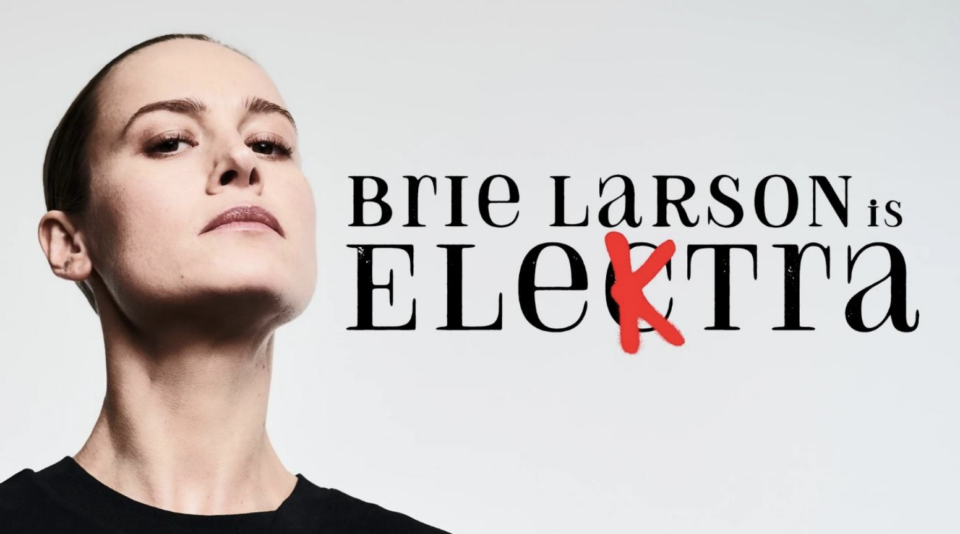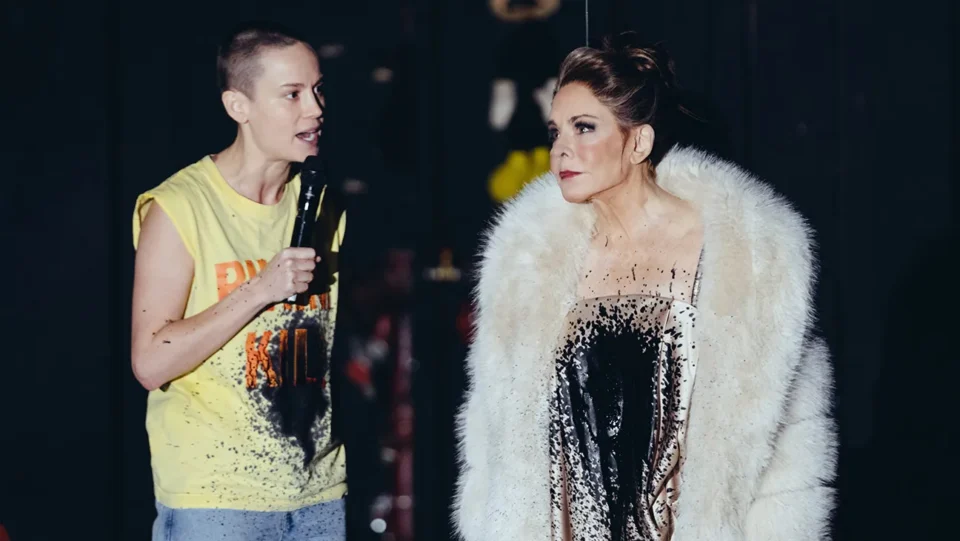|
Buzz-cut hairdo, Brie Larson looks down her nose at us, in snuffy disapproval. A black shadow caresses the left edge of her cheek, slithers under her chin. It seems to elevate her face and lengthen the neck, emphasizing her sneering stare. The poster indicates the imminent flavor: the relationship that Larson constructs between us and her, the protagonist, Sophocles’ Elektra.
Of course, us – the viewers – have done nothing wrong, but the poster places us as Elektra’s mother, Clytemnestra (played by Stockard Channing). The plot follows Elektra avenging the death of her father, King Agamemnon, who was murdered under Clytemnestra and her lover, Aegisthus. Tense family relationships unpeel over the course of this tragedy, but the mother-daughter rivalry is the most compelling. The desire to murder one’s mother is a taboo that entrances the human psyche, as recognized by Freud in his Electra complex.
Brie transforms herself into a moody teenager while constructing this pernicious relationship. She strides around the stage in a neon vest, microphone in hand, and, at one point, sports a playboy fur-coat. In Euripides’ version of the play, Elektra describes her own grief-stricken appearance – “My hands, my tongue, my anguished heart, my close-cropped head” – which helps to explain the buzzcut. But Daniel Fish as Director seems to transform this element in his highly stylized rendition to make it punk.
This recasting of a hairstyle that would have indicated mourning in ancient Greek is highly compelling. The whole image – along with the hybrid speech-sing style – resembles a punk concert. Every time someone utters the name of Elektra’s stepfather, Aegisthus, the characters spit on the floor in unison. This is dramatic, at first, but after a while its somewhat tiresome repetition induces audience concern for dry mouths and a potential saliva slip-and-slide on stage. His name was said many times…
Punk is not only striking in imagery, but for the way it casts the relationship between Elektra and her mother. The dialogue between the two characters resembles time immemorial teenage angst, albeit with matricidal tang. Self-reproducing narcissism in the obsession by both characters with retaining wealth and status. Then there is a screeching clash of irrationality – two internally consistent logical narratives, which produces two incompatible individuals who cannot see eye-to-eye. They are both tunnel-vision with pursuing internal rationality that through the exercise of reason, reality is lost. Blood bonds are poisoned, and evil omens fulfilled.
Low-moody tones are glistened by the beauty of an all-female chorus, who sing in angelic unison. Their harmonious singing is reminiscent, in parts, of an Oxbridge college choir: rising above the humdrum of everyday life to contemplate the heavenly sphere. Synchronicity of voice is matched by that of action. The chorus assume several positions – leaning back with microphones forward, organizing themselves in a line, and sitting legs wide open – that impress ancient Greek statues, as if one had broken into a cast factory.
Whereas the chorus stun for their synchronicity, other characters transform into distinctive personalities. Stockard Channing’s rendition of Clytemnestra gives Cruella de Vil vibes. She is draped in white fur with her hair slicked back, brunette with a badger-white stripe. The phrase “to cast a glamour” referred to a spell of enchantment in the eighteenth century. Glamour for Clytemnestra is indicative of her self-obsession, and the selling of family bonds to satisfy lust and remain on the side of success.
|





